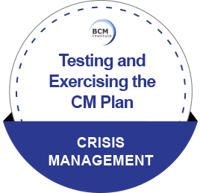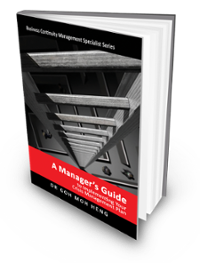Testing and Exercising Your Crisis Management Plan
Simulation Exercises
Regular simulation exercises are necessary. The best plans are worthless if they exist only on paper.
The crisis response team must conduct regular (at least biannual) exercises, channel testing, resource inventory, etc. These tests should be done regularly but not scheduled to test the speed of response.
Rehearse the CM System
Numerous techniques, from full-scale rehearsals to simple drills, will be explained as the best means to optimize the Crisis Management system. The debriefing process should be thoroughly discussed, whereby improvements are documented and put into an annual plan.
The test may be necessary to ensure an organization’s crisis management team has the skilled members to respond effectively to a crisis. Typically, the need for training in crisis management, peer Crisis Simulation support, first aid training, evacuation planning, and many other areas is identified.
Category of Tests and Exercises
There are several categories of tests, each introducing escalating amounts of pressure, real-time decision-making and resources. These include:
Plan Walkthroughs
These introduce the plan and enable managers to familiarize themselves with it. They may also include several "what-if" scenarios to illustrate how the plan should work.
Tabletop Exercises
The crisis management team or sub-teams participate in roundtable discussions by an external moderator. A scenario is developed in advance and introduced, with the moderator taking the participants through a chain of decisions and problems and with an analysis of performance at the end of the exercise.
Incident Simulation (Event Simulations)
Crisis responders gather in the crisis command centre established as part of the crisis plan to respond to a mock incident. (These simulations often make the evening news when local police or airports conduct them.)
Observers are attached to each crisis team member to evaluate his or her team's activities and performance. The simulation often lasts for several hours, has multiple incidents arising from the main scenario and includes a detailed analysis immediately at the end.
Full Simulation (Full Deployment Drills)
These are most commonly conducted in the oil, chemical, energy, and airline industries. In full deployment drills, an incident is simulated at a designated site, requiring responders and equipment to be deployed as they would in an oil spill or airline crash. Realism dictates that these drills often last hours or days so that management teams get a sense of fatigue and pressure and practice shift changes and planning cycles.
Accordingly, these drills require months of planning, scrupulous attention to detail and realism, and a significant budget.
Goh, M. H. (2016). A Manager’s Guide to Implement Your Crisis Management Plan. Business Continuity Management Specialist Series (1st ed., p. 192). Singapore: GMH Pte Ltd.
Extracted from Testing and Exercising the CM Plan
More Information About Crisis Management Courses
To learn more about the course and schedule, click the buttons below for the CM-300 Crisis Management Implementer [CM-3] and the CM-5000 Crisis Management Expert Implementer [CM-5].








![[BL-CM] [5] Register](https://no-cache.hubspot.com/cta/default/3893111/82024308-16f4-4491-98be-818a882c6286.png)

![Email to Sales Team [BCM Institute]](https://no-cache.hubspot.com/cta/default/3893111/3c53daeb-2836-4843-b0e0-645baee2ab9e.png)





